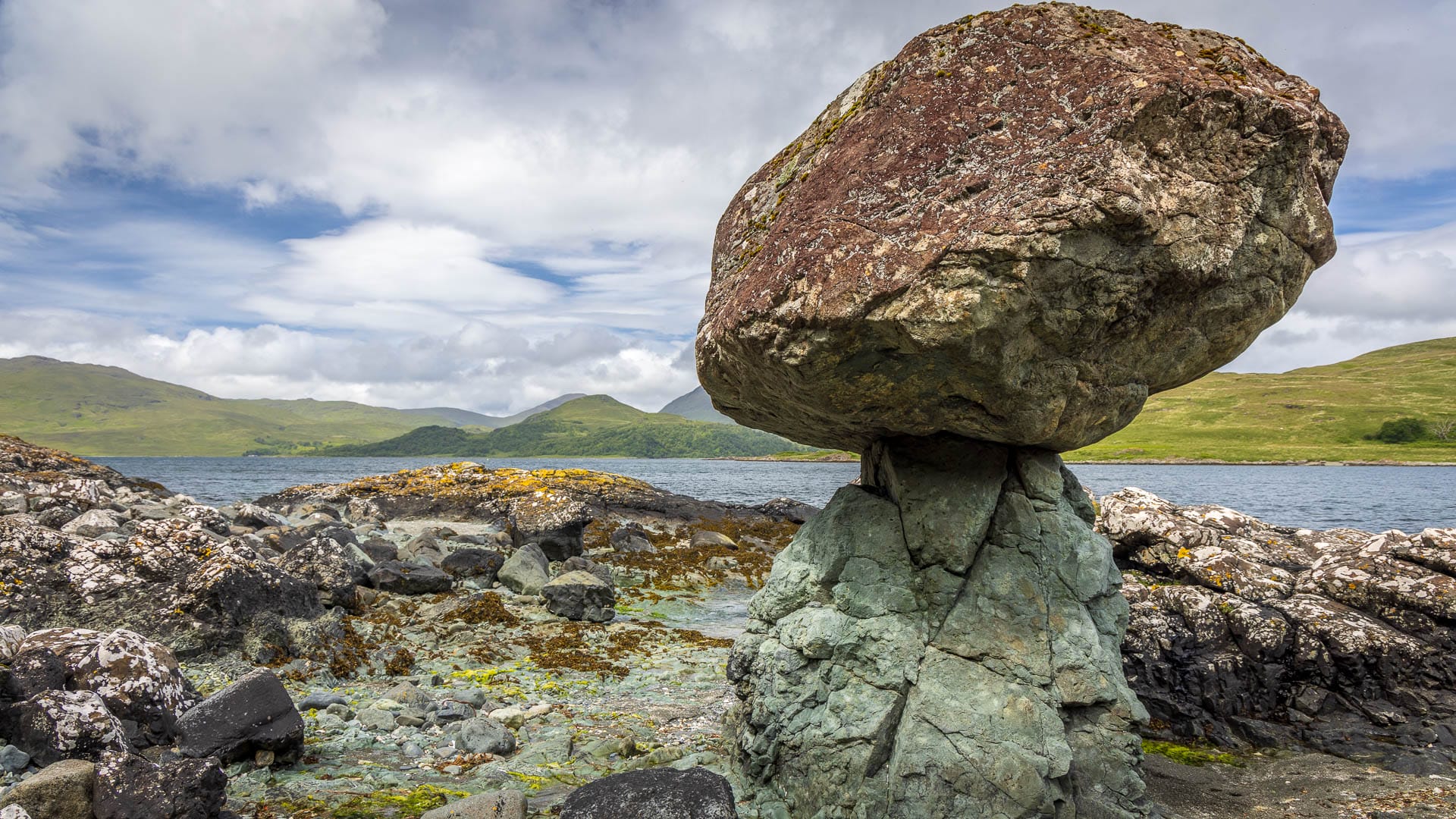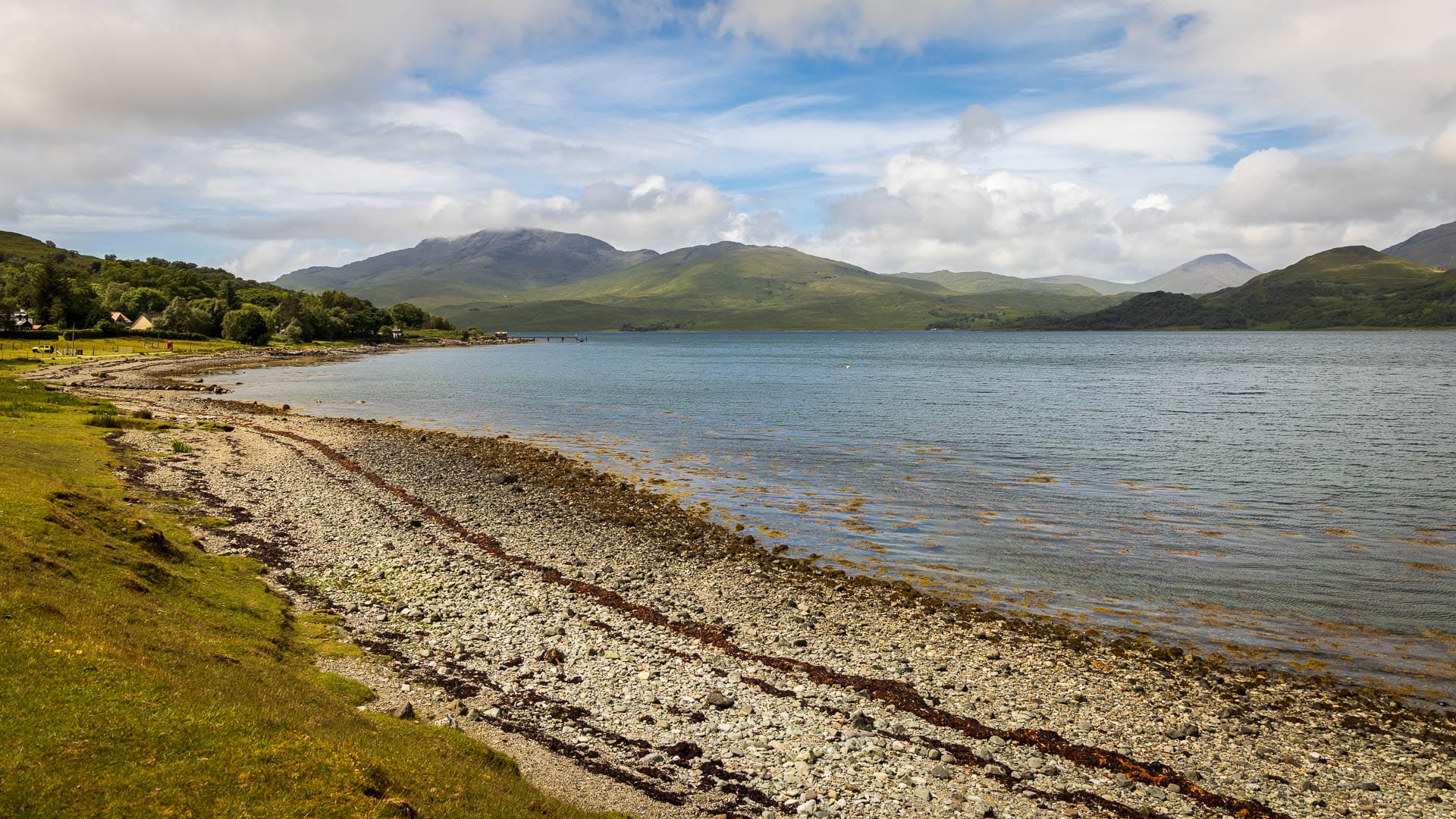A walk in the beautiful countryside on the coast of the Isle of Mull leads to a very special rock: the Mushroom Stone.

Loch Spelve in the south-east of the Isle of Mull is shaped like the head of a hammer. Together with Loch Buie further west, it cuts off a section of the island and forms a headland. Most visitors to the Isle of Mull leave it to the left, or make it to the village of Loch Buie. However, most visitors do not set foot on the other side of the peninsula.
A mistake.
Because at the eastern end of the peninsula there is not only a wonderfully green landscape, but also a small natural wonder: the Mushroom Stone. The best way to reach it is on foot. The public road ends a few hundred metres before it.

The gravel path leads partly through a rustic forest along the shore of Loch Spelve, past lichen-covered trees and dripping rocks. The Mushroom Stone is just a few hundred metres from the car park in front of the forest between the water.
If you like, you can continue along the path afterwards. A ruin soon appears on the shore. A former house whose inhabitants must have had a marvellous view in the past.
After around 1.5 kilometres along the path, you reach the tip of the Croggan headland. Here the view of the Firth of Lorne opens up.
If you have plenty of time, you can walk around two kilometres further, circle the headland and discover the beach on the other side. The hike would then be around eight kilometres there and back. The shorter version to the headland is around four kilometres there and back.
By the way: Otters may also be out and about here. So keep your eyes on the water.
Tip: The Allt nan Clar waterfall
Around two kilometres after the turn-off at Kinlochspelve towards Croggan, there is a parking bay on the right-hand side of the road (often occupied by a camper). Behind it is a very pretty waterfall that cascades down through the forest and bracken. The small river is called Allt nan Clar.
Knowledge: How the Mushroom Stone was formed
The sea has done a great job here. The Mushroom consists of two different types of rock – clearly recognisable to the eye by their colours. The water that has flowed in here over the centuries has washed out the softer stone. The “hat” of the harder rock lies on top.
The Mushroom Stone is estimated to be around three metres high.
Directions
With satnav: enter “PA63 6AH” to get to the headland near Croggan.
Without sat nav: Coming from Craignure, take the A849 south towards Bunessan. Soon you will see a sign to the south of the roundabout pointing to Croggan. Follow the sign and take care as the road turns left again at the end of the loch (straight on would take you to Lochbuie ). Now follow the road to the very end and park on the right in the meadow just before the forest begins.